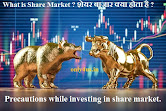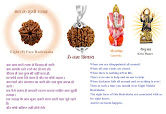Forex Market Vocabulary 1 : Introduction of Forex Market : फॉरेक्स मार्केट को समझें
Explain the terms used in forex trading and their meaning in detail.
Forex trading is a special type of foreign exchange trading in which the currency of one country is exchanged for the currency of another country. During this business, some words which are commonly used in business, we will understand the meaning of these words in two parts. For the second part, you can read by clicking on Continue Reading... The following are: Let's find out.
Pip
Lot
Margin
Swap
Expert Advisor
Fundamental Analysis
Trading Strategy
Risk Management
Lot Size
Slippage
Spread
log (Long)
Short
Swing Trading
Day Trading
Scaling
Stop Loss
Leverage
Bullish
Bearish
ISO
Swap
MT4
Swap
Spot Price
Order
Volume
Wallet
Webinar
Short Selling
Settlement
Squeeze
Margin
Scaling
Trading Platform
Market Order
Limit Order
Swing High
Swing Low
Target
Trade Order
Fundamental Analysis
Technical Analysis
Long Position
Short Position
Drawdown
Pip - Pip represents the unity of a currency's changing value in forex trading. A pip is the smallest difference that represents the difference in value of two currencies. Pip is a unit in currency trading that represents a small change in a floating currency rate. It helps in measuring the accuracy of currency used by currency traders. Pip is the term used in forex trading and refers to a small change in the value of a currency. A pip is usually a quarter decimal of a number. If you are trading for EUR/USD then one pip will be 0.0001 EUR for one amount.
A pip is a unit of change in price during trading. This is usually the same as the fourth decimal. For example, if a currency moves from 1.2430 to 1.2435, the change in price would now be: 5 pips.
Lot - This is the size of the currency instrument you want to buy or sell. A typical lot size is 100,000 Euros.
A lot is a fixed amount of a currency that a trader wants to buy or sell. The quantity of a lot varies for different currencies. For example, if you trade EUR/USD, one lot would be 100,000 EUR.
Margin - This is the amount of money that needs to be deposited into your account so that you can use leverage. When you deposit margin into your account, you can use leverage to buy or sell real currency.
Margin is the amount deposited by the trader which he keeps in his account. This amount is used by the trader to trade in currency trading. The margin amount is determined by the broker and is used for the validity of the position taken by the trader and also for the amount remaining in the trader's account.
Margin is a technique that allows a trader to buy an asset on credit instead of paying a portion of it himself. Its main purpose is that the trader does not have to deposit the entire amount for the purchase of that asset. Margin is a financial relationship which is the amount of cash available to a trader for their wide purchases. The trader has to pay margin cash when they place a buy or sell position.
Swap - Swap is a newer term used when a trader executes a trade at a specified time interval. With swaps, traders have to pay an additional obligation on their buy or sell price.
Expert Advisor - It is an automated trading system that provides assistance to the Forex trader. It is a computer program that makes automatic arrangements based on the state of the currency exchange market.
Fundamental Analysis - Fundamental analysis is the study of the communications that help determine the value of a currency. In this, various economic, political and external factors are studied which are important for the currency market. It is a detailed analysis that helps the forex trader to make currency predictions.
Trading Strategy - A trading strategy is a plan for a specific trade or investment. It is created by a person or organization that reflects the policies, directions and goals set for currency trading.
Risk Management - Risk management is a broad term that refers to the control and management of risk in relation to any business or investment. In forex trading, this term is used by traders to protect their investments and reduce their trading risk.
Lot Size - Lot size is the quantity of the currency instrument in which a trader invests. lot size of that currency instrument
nets in which a trader invests. The quantity of a lot varies for different currencies. Lot size selection is very important for a trader's investment and risk management.
Slippage - Slippage is a situation when the trader's buy or sell price range varies after making a trade statement. This happens very often in currency trading when there is heavy liquidity in the market and people are not able to complete their trades according to the details. Slippage is a parameter that occurs during trading. This is a type of price confusion that occurs during order execution of a trader's guess.
Slippage is a type of trading problem that arises when you place an order, but its investment is somewhat unsuccessful or not. Slippage is a situation when an order cannot be placed at a price, such as when market movement is excessive or volume is low. In this situation the trader has to face price divergence.
Slippage is a price difference that differs from the final price of your order. It consists of ambiguity about the price, lack of volume and precision of the market, and the dominance of opposite direction.
Spread - Spread refers to the difference between the buying and selling price of a currency. This fee is charged by the broker and is divided into negative spread and positive spread. In a negative spread, the buy price is lower than the sell price, while in a positive spread, the buy price is higher than the sell price. The spread charged by the broker can reduce the trader's profit, so traders must understand the spread.
Long - A long is a situation in currency trading when a trader buys a currency or asset and invests in it instead of selling it. In this type of trading, the trader hopes to make a profit when the value of the currency or asset increases.
Short - A short is a position in currency trading when a trader sells a currency or asset that he or she has not previously purchased. In this type of trading, the trader hopes to make a profit when the currency or asset depreciates.
Short is a trading or investment technique in which the trader sells an asset that he does not wish to hold. This technique is especially used for financial products whose prices are falling or whose prices are expected to fall.
Swing Trading - In swing trading, traders hold positions for a period of one to a few days or even a few weeks. It is suitable for traders who cannot afford large time frames to make better investment decisions.
Swing trading is a trading strategy for the intermediate periods between the trader's buying and selling movements. In swing trading, traders buy at a high and then sell at a low, or hope that the market will be relatively stable and they will make more profits. Swing trading is an investment technique in which traders buy and hold a stock or currency for a short period of time in order to take advantage of its movements.
Swing trading is a financial business that lasts from days to several weeks. Followers of this technique catch swings in the prices of the relevant financial instrument that change over different time frames.
Continue Reading............




























Post a Comment